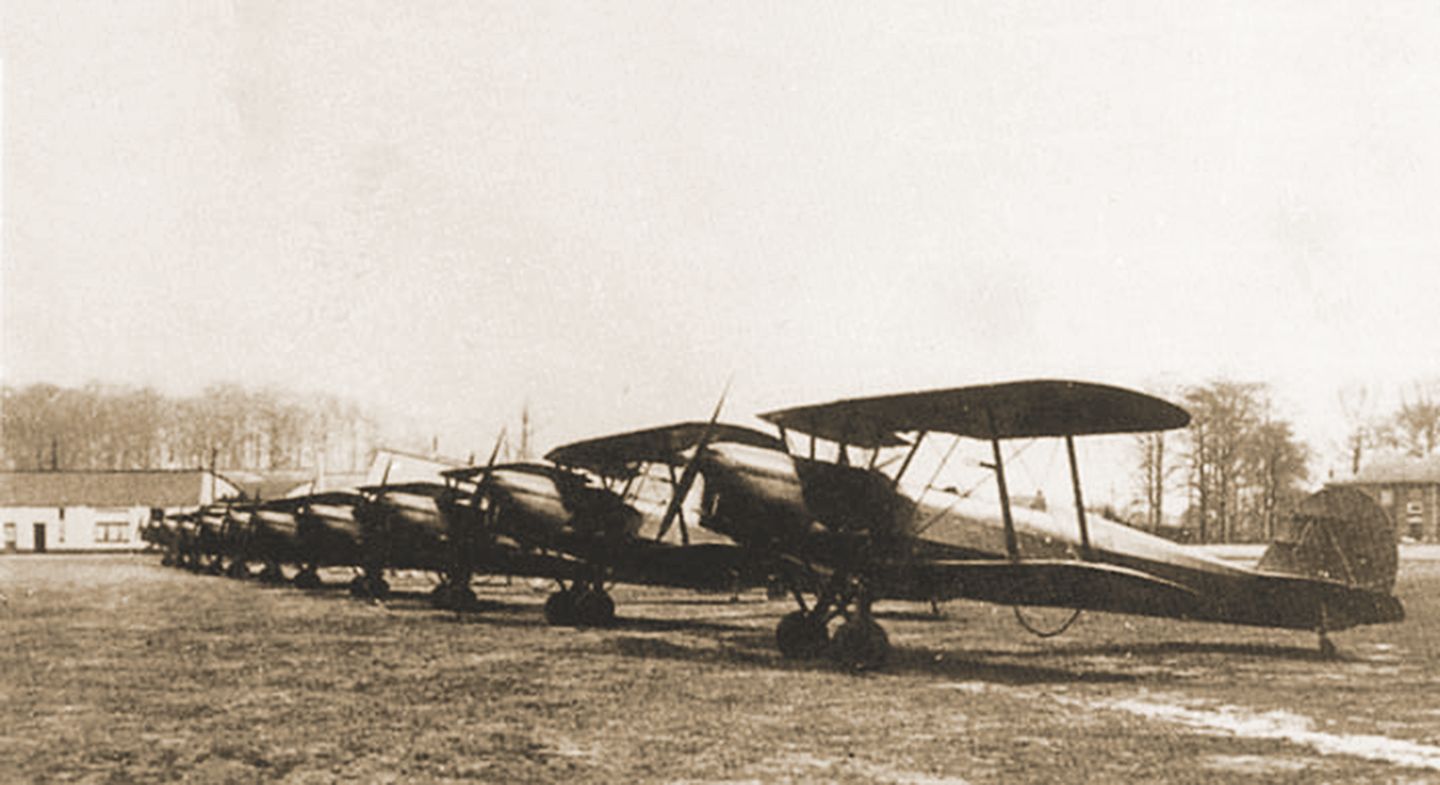
A series of Stampe-Vertongen SV-4s, ready for delivery to the Belgian military aviation. (coll. Stampe and Vertongen Museum)
The RSV and SV aircraft
Not satisfied with the aircraft on the market, Stampe and Vertongen built their own training aircraft. Alfred Renard designed the first series of RSV aircraft. He was succeeded by George Ivanow. His designs were sold under the name SV. After the accident of Ivanow, the design office was taken over by another Russian: Demidoff. He would refine the original design of the SV-4 into the type we know today.
The RSV aircraft designed by Alfred Renard were very robust and ideal for student pilots, who do not always land their aircraft gently. After George Ivanow took over from Renard, designing aircraft for pleasure aviation was also considered and finer models were put on the drawing board. The most famous and commercially successful was the SV-4, which was marketed in several variants. Initially based on the de Havilland Tiger Moth, the design was refined, especially at the request of Elza Leysen, who was eager to perform aerial acrobatics. The story goes that due to an unclear notion on the plan, the upper wing was mounted at a slightly twisted angle, which greatly improved the aerobatics of the aircraft. Some time later the SV-5 would also see the light.
This was a sturdier aircraft, designed to military specifications. Not only the Belgian military aviation bought these machines, but also the Latvian Air Force, who 'exchanged' 10 machines for 5,700 tons of grain.
The dramatic accident with the SV-10 put a damper on the success story of Stampe and Vertongen.
The outbreak of World War II and the destruction of the installations by the Germans just before the liberation, put an end to aircraft construction in Antwerp.
However, the SV-4 made a "comeback" in France where the type was built under license after the war. The French sometimes want us to believe that “un Stampe” is a French product, but nothing could be further from the truth.
In later years, Jean Stampe himself teamed up with Alfred Renard for a while, but it had little commercial impact.
Photo captions (top-left to bottom-right)
- The Latvian SV.5's ready for shipment. (coll. Dirk Buytaert)
- RSV 32/100 O-BAJC at the Antwerp airport. In the background the Drakenhof. (coll. Dirk Buytaert)
- Members of the Antwerp Aviation Club pose proudly in front of their RSV 32/90 OO-AJP. (coll. Dirk Buytaert)
- An RSV 26 equipped with floats, ready for a float test on the moat of the Lanteernhof. (coll. Dirk Buytaert)
- An RSV 18/100. (coll. Dirk Buytaert)
- An RSV 32/90 fitted with a Gipsy engine of the Antwerp Aviation Club. (coll. Dirk Buytaert)
- Stampe SV-5 Tornado aircraft ready for delivery to Latvia, where they were exchanged for grain. (NOTE : The swastika was used by the Latvian Air Force from 1909 to 1940 and has nothing to do with the symbol used by the Nazis.) (coll. Jean Dillen)
- Elza Leysen and Jean Stampe in front of the OO-JAN, the first version of the SV-4 for aerobatics. (coll. Dirk Buytaert)
- Rex Newman in an SV-4 of the Antwerp Aviation Club. (coll. Dirk Buytaert)
- A Stampe SV-5 of the Belgian Military Aviation. (coll. Dirk Buytaert)






